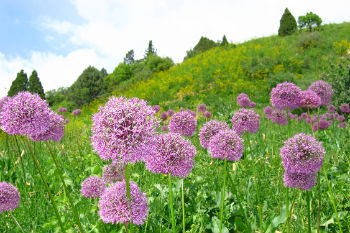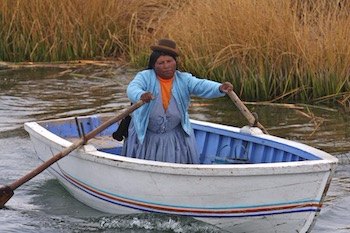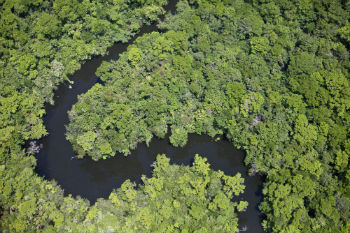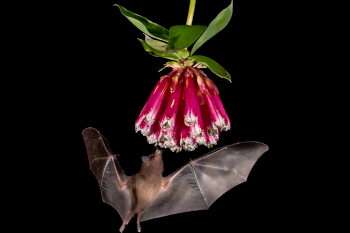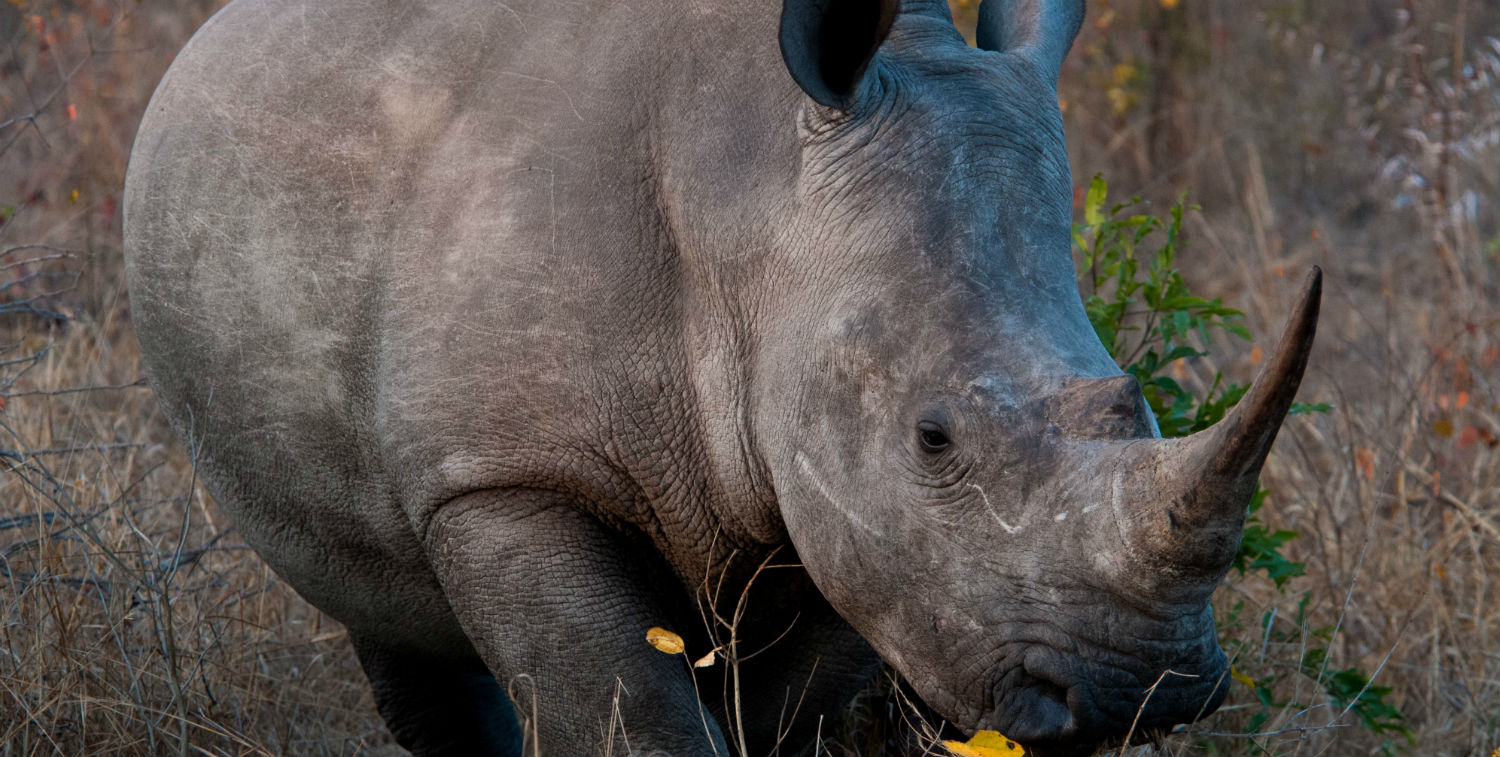Main menu
CEPF is a joint initiative of l’Agence Française de Développement, Conservation International, the European Union, Fondation Hans Wilsdorf, the Global Environment Facility, the Government of Japan and the World Bank.
Visitez le site français コア情報の日本語翻訳を読むOr use Google Translate to translate the English site to your language:
GTranslate
Protecting South Africa's Water for People and Biodiversity
07 November 2017
07 November 2017
Overview
Contributing to Convention on Biological Diversity Aichi Targets
When I return, as I often do, to the rural village and area of my childhood and youth, the poverty of the people and the devastation of the natural environment painfully strike me. And in that impoverishment of the natural environment, it is the absence of access to clean water that strikes most starkly.
– Nelson Mandela
When you look at the verdant grasslands stretching through Ongeluksnek Nature Reserve in South Africa’s Drakensberg Mountains, water supply worries do not leap to mind. The wildflowers and fauna such as the mountain reedbuck and the regal Cape vulture and bearded vulture, if you are lucky enough to spot them, can also distract from the topic. But like anywhere, water is the foundation of it all. And water resources here are under threat from inappropriate land use and invasive alien plants.
Similarly, when taking in the reserve’s vast, open horizon, it’s easy to forget that it lies in one of the most densely populated and poverty-stricken regions in sub-Saharan Africa. Beloved former President Nelson Mandela was from this province, the Eastern Cape, which was the Transkei homeland during the apartheid system of racial segregation and oppression Mandela would eventually help overthrow. But the scars of that system, which forced 80 percent of the population onto 13 percent of the land for almost 100 years, linger and throb. There are, and long have been, too many people in the province for the local agricultural economy and natural resources to support sustainably. Plans to develop a more diverse economy are frequently at odds with efforts to restore ecological balance.
But the people of the Eastern Cape don’t have to choose between economy and ecology, water or work. In fact, grantees of the Critical Ecosystem Partnership Fund (CEPF) working in the region are showing that with coordination, cooperation and long-term planning, livelihoods and nature can not only co-exist, but thrive, together. And in fact, they must go hand in hand to ensure the long-term existence of both.
What Brought Us Here?
Ongeluksnek lies within one focal point of conservation concern in the province—the Upper Mzimvubu River Catchment, which includes approximately 435,000 hectares of land area around the river that drains into the Mzimvubu. The river is a source of fresh water for many of the 1 million people living in the catchment. It is also one of the last free-flowing rivers in South Africa, meaning it has not been subject, yet, to the dam projects that have altered other rivers in the country for the purpose of electricity generation, industrialization and irrigation on farmlands. That free-flowing quality leaves the associated ecosystems at least closer to their natural balance than their dam-impacted counterparts.
That is especially significant here because the catchment is part of the Maputaland-Pondoland-Albany (MPA) biodiversity hotspot that stretches across 275,000 square kilometers along the east coast of southern Africa, through parts of Mozambique, Swaziland and South Africa. Characterized by a vegetation type called subtropical thicket, which is unique to the region, it is the second richest region in plant life in Africa for its size. An estimated 8,100 plant species occur within the region, of which at least 1,900 are endemic, or unique, to the area. The mammal fauna of the hotspot include more than 200 species. Of these, eight are endemic and five, such as the black rhino, are Critically Endangered. It is also home to an impressive diversity of birds, reptiles and amphibians.
In August 2015, CEPF will reach the end of a five-year, $6.65 million grants program that focused on key biodiversity areas and corridors in the hotspot. CEPF made grants to nongovernmental organizations, community associations, and researchers to implement conservation projects. CEPF is nearing the end of a highly targeted five-year, $6.65 million investment in key biodiversity areas of the hotspot (ending in 2015). That investment has beenawarded in grants toconservation projects implemented by civil society, including nongovernmental organizations, researchers, community associations and private businesses. These projects all feed into the conservation strategy for the hotspot, called an ecosystem profile, that CEPF developed with stakeholders in the region to guide its investment.
The profile identified two roughly parallel corridors for conservation: the Highlands Grasslands, running northeast to southwest below the Drakensberg Mountains, and the Pondoland corridor, running along the Indian Ocean coast. The Mzimvubu River crosses west to east through both of these corridors, and the upper catchment area sits squarely within a grasslands landscape. In the upper catchment, there are also pockets of mistbelt forest, wetlands and critical bird habitat.
CEPF is funding complementary efforts by Conservation South Africa (CSA), Environmental and Rural Solutions (ERS), and the Endangered Wildlife Trust (EWT) to work with communities and local, provincial and national government entities to improve and protect the Mzimvubu Catchment and the well-being of the people who depend on its water.
Threats
The Mzimvubu Catchment offers a lot of value to the people living in the river basin.
A healthy river catchment provides:
- Water quantity and quality.
- Water for household food production.
- Carbon sequestration.
- Disaster risk mitigation (for example, wetlands absorb rainfall during extreme weather and release it during dry periods; intact forests help prevent mudslides).
- Nature-based tourism sites.
- Provision of raw materials (such as fuelwood or medicinal plants).
- Long-term grazing fodder.
- Protection of fisheries.
All of these benefits are also referred to as “ecosystem services.”
Several factors have, however, diminished the quality and quantity of water reaching and being transported by the Mzimvubu. At the same time, demand for fresh water is growing, particularly from agriculture and settlements located between urban and rural areas.
Threats include:
- Degradation caused by the spread of alien plants that reduce water flow and land productivity.
- Poor rangelands management that leads to poor grass cover and livestock production and associated overgrazing.
- Wastage and inefficient use of water resources (also often due to aging infrastructure) for fodder production.
- Conversion of natural habitat for farming or settlements, causing lower absorption of water, increased soil erosion and associated sedimentation of water infrastructure.
- Poorly planned infrastructure, including building of roads through flood plains and placement of fence lines that concentrate cattle in sensitive areas.
All of these factors reduce the ecosystem services provided to downstream communities and leads to higher production costs and lower profitability of farmers in the upper catchment. This is particularly true for communal farmers (which make up about 80 percent of the catchment), and also results in lower wages for farmers working on commercial farms.
These factors have also taken a toll on the health of the region’s ecosystems, as evidenced by the gullies (bad lands) that are evident throughout the catchment.
CEPF Grantees Take Action
Traditional leaders, government and conservation groups unite
Even before CEPF came on the scene in the Eastern Cape, ERS was among those in the region coordinating actions to improve the situation for the Mzimvubu Catchment. Both CSA and ERS were founding members of the Mzimvubu Catchment Partnership Program (UCPP), a network that was conceived in 2010 and formalized in 2012, and whose early members also included two local municipalities; the Eastern Cape Department of Economic Development, Environment, and Tourism; the Eastern Cape Parks and Tourism Authority; the nonprofit Save Act; the Mehloding Community Tourism Trust; EWT and the South African National Biodiversity Institute (SANBI).
The goal was to coordinate government, traditional authorities, NGOs, business and civil society in order to create a formally recognized water management forum. The group alliance would, among other things, be used to share and improve knowledge of restoration techniques, the economic value of healthy ecosystems, and vulnerability to climate change; and establish baseline monitoring information on the landscape, as well as social and economic development in the region. The plan also was to coordinate support for communal and commercial stewardship — efforts by communities, businesses and individuals to sustainably manage ecosystems outside formal protected areas within the Mzimvubu watershed.
CSA and ERS approached CEPF in the early stages of the forum establishment, seeking support to build it up, and the result was the CEPF project “uMzimvubu Catchment Partnership Program—Building Institutions and Financial Sustainability for Restoration and Conservation of the Upper Umzimvubu Catchment,” which began in October 2012.
“The vision had already been developed, but we did not have the resources,” said Lipalesa Sissie Matela, director of ERS, regarding the UCPP. “That’s why CEPF made such a big difference, because we could finally get everybody together.”
“The success of UCPP lies in the firm belief that all stakeholders within the catchment have a responsibility and ability to play a positive role in the restoration of the catchment. We have all learnt that it does not help to curse the darkness of degradation and point fingers, but to light candles through participation in restoration work,” said Sinegugu Zukulu from CSA.
Under the project, which continues through February 2015, the UCPP has so far been able to bring 31 organizations and individuals on board, including not only NGOs and government agencies, but also traditional leaders from two communities, as well as research institutions and consulting firms. All of these entities signed a memorandum of understanding with a 20-year vision for restoring and maintaining catchment health. The group meets on a quarterly basis to share experiences and to report on progress on their own projects, particularly restoration work being done within the catchment.
The forum is the first of its kind on South Africa, and government authorities have asked CSA and ERS to help in the development of a regional catchment management agency. UCPP has been recognized by DWA (Department of Water Affairs) as the only functional civil society representative Catchment Management Forum in the country.
Organizations that are involved in clearing of alien invasive vegetation have established smaller networks for the sake of learning from each other, and are providing skills exchanges for sharing best and safe practice. LIMA, CSA and ERS regularly have shared field exchanges between staff members to develop best practice approaches. The same is happening in rangelands management, where these groups have established a local network with practical workshop sessions on how to best manage rangelands for the benefit of both people and nature, exploring the use of herders and ecorangers, who have expertise to manage rangelands and livestock grazing through usage of modern technology. Exchanges with Lesotho colleagues through the Maloti Drakensberg Transfrontier Programme (MDTP) have also been invaluable in sharing experience and refining approaches.
On the ground in the catchment
CSA and ERS have worked closely together, and with other organizations, on the ground to get to the root of some of the catchment’s woes by addressing the problem of invasive plants, overgrazing and the need for local community engagement in land management.
CEPF funded the ERS-driven project “Ongeluksnek: Biodiversity Custodianship through Innovative 'People and Parks' Cooperation,” which ran from February 2012 to December 2013. Working in 13,000 hectares of the upper Mzimvubu River Catchment, in the Ongeluksnek Provincial Nature Reserve, ERS employed local residents to clear invasive plants, especially two varieties of wattle tree that have dug in through many parts of the Eastern Cape grasslands. The crews exceeded their original goal of clearing alien plants from 100 hectares, ultimately clearing 270 hectares, in part by developing new techniques for wattle removal. ERS is now working to ensure follow-up maintenance of the cleared landscapes, which has its own set of challenges in handing over to provincial conservation authorities who often lack resources to undertake follow up.
“The concept of using existing livestock herders and eco-rangers to assist with post-clearing maintenance in communally owned landscapes around the reserve and further east along the catchment is an important stewardship approach emerging out of this CEPF-supported experience,” said McLeod. “DEA (Department of Environmental Affairs) Land User Incentives program funds have been accessed for clearing and range restoration project implementation in the western and eastern ends of the catchment. Despite the logistical challenges involved in providing practical site support to these remote sites, we see the approach as being something like King Shaka’s ‘bulls horns’ strategy, where his army surrounded the enemy from both sides. We feel a bit like an army taking on an invading force, aka alien plants.”
Additional results of the multifaceted ERS project include:
- Assistance to the nearby Motseng community to establish a communal property association, allowing the citizen-run organization to take ownership of 805 hectares of surveyed land adjacent to the reserve. ERS worked with the community to improve rangeland management practices to make herding more sustainable for the farmers and for the species of plants native to the area. It’s a model ERS believes can be replicated in surrounding communal lands. The CPA is still being registered through a long, state-supported process.
- Development of grazing plans that maintain native vegetation for all communities surrounding the reserve.
- Improved trails and wildlife viewing opportunities for tourists.
- Establishment of conservation links with the adjacent RAMSAR site in Lesotho to highlight strategic and international significance of Ongeluksnek.
- Development of a bearded and Cape vulture “hide” in Ongeluksnek, a structure that would allow tourists to get a close-up view of the these and other species without being seen by the birds. There is only one other hide in the Drakensberg, which is fully booked, making this an opportunity to market this special area to ecotourists.
- Engagement of the local community in monitoring of the vulture species.
- Improved long-term livelihood opportunities for 40 rural households through green jobs, grazing and tourism.
One effort that has proved challenging so far is ERS’s attempt to lay the foundation for a payment for ecosystem services plan, under which downstream beneficiaries of a well-maintained catchment would pay to support that maintenance. Unfortunately, the downstream users and other beneficiaries are largely poor communities without the means currently to provide such support. But ERS continues to look for opportunities, with the support of UCPP allies including SANBI, EWT and CSA.
Local communities have gained support, however, via cooperation among ERS, CSA and the government-funded Natural Resource Management Land User Incentives project to expand the clearing and rangeland management efforts to areas near the reserve.
The rangeland management aspect of the project benefited from the lessons CSA and others learned from the CEPF-supported Biodiversity and Red Meat Initiative developed in South Africa’s Cape Floristic Region. That program also brought conservationists and herders together to develop best practices for sustainable grazing that protects native plants and makes for healthier, and more commercially desirable, livestock.
“We are employing 28 ecorangers who are managing the rangelands to make sure the wattle doesn’t come back,” said Sinegugu Zukulu, CSA’s program manager for the Mzimvubu Landscape. The rangers work with the herders to encourage rotational grazing that promotes the growth of native grasses and helps keep wattle at bay, Zukulu said. Assistance to the herders goes beyond land management. CSA also helped herders vaccinate livestock, and CSA and ERS organized a recent stock sale for the villages they have been working with. Zukulu described the sale as “a resounding success,” noting that the communities brought in nearly half a million rand in one day, the biggest sale they had ever seen. “The four buyers who were there commented that they had never seen cattle looking so good in these communities, and they have no doubt that it is due to good grazing, improved by the rotation grazing that we have introduced,” Zukulu said.
“For them, it is their rangeland that is important. It is their livestock that is important. It is being able to afford to send their children to school. But we know our interest is catchment management, rehabilitation of landscapes, biodiversity,” said ERS Director Matela. “But at the end of the day, what we achieve is going to benefit them, it’s going to benefit us, it’s going to benefit the landscapes. So we can name it different things, but our goal is the same.”
Another benefit to the communities has been preservation of tradition.
“The youth who have been seeing herding of livestock as a backward job are now seeing the benefits of herding and learning new skills of rangelands management,” Zukulu said. “This means preservation of culture of herding in these communities.”
And land stewardship may become a tradition. CSA worked with six teams in three villages to establish voluntary stewardship agreements to reclaim and restore degraded lands, and maintain areas that have been cleared of alien species.
“CEPF funding has enabled us to influence and bring about change in the way people have been doing things,” said Zukulu. “We have brought about the much needed change, a paradigm shift.”
Other achievements include:
- Securing nearly 20 million rand for restoration funding for the upper catchment primarily from the South African Department of Environmental Affairs and Natural Resource Management, and also including funding from Endangered Wildlife Trust. This will result in nearly 200 beneficiaries being employed in the clearing of alien invasive vegetation and management of rangelands.
- Efforts to help four local municipalities integrate climate change into their planning to ensure community resilience, conducted in cooperation with the National Department of Environmental Affairs and the South African Local Government Association.
Big Picture
From the start, CSA approached the catchment’s conservation from a longer-term perspective. Its work with CEPF, ERS, the government and the other members of the UCPP are all part of a 20-year plan for the Mzimvubu Catchment.
The plan has been designed as a source-to-sea initiative for phased implementation across the upper, middle and lower reaches of the catchment, with the aim of restoring and protecting catchment integrity and stability while improving livelihoods and resilience of ecosystems and communities through robust multi-stakeholder cooperation.
Other CEPF grantees are also contributing to this effort. See our CEPF Google Earth tour of projects in the Mzimvubu Catchment.
CSA and fellow CEPF grantees EWT and Wildlife and Environment Society of South Africa (WESSA) also recently launched a European Union-funded project that builds on the CEPF-funded activities in the catchment and beyond, including portions of the southern KwaZulu-Natal Province and focusing on the catchments of the Amathole and uMzimkulu river catchments in addition to the Mzimvubu.
In coordination with the EU-funded initiative, CEPF also approved a new grant to ERS to build on the community stewardship efforts made in the first grant. This time, the key target area is the watershed shared between South Africa and Lesotho that forms the source of the Mzimvubu, located between Ongeluksnek and the Swartberg area in the east. The latter area is adjacent to the Ukhahlamba World Heritage Site.
Two projects have already been leveraged through this support, which aims at unlocking resources available through the Maloti Drakensberg Transfrontier Programme for the upper catchment / watershed zone.
